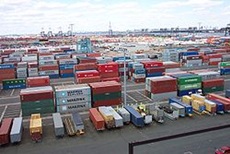What price containerisation?
04 Aug 2010
India's policy-makers have long acknowledged that if the country is to fulfil its economic potential, the transport of freight – particularly from ports to inland factories and plants – has to be made more efficient. And with the country struggling to meet its road-building targets, this can only be done the help of the much touted 'dedicated freight corridors'.
 Perhaps thanks to the British Raj, India already has one of the most widespread rail networks in the world. But a dedicated freight corridor involves more - better port connectivity; increased containerisation capacity; and making the transport system more user-friendly. In recent years, there has been progress on all these fronts, but it needs to be speeded up.
Perhaps thanks to the British Raj, India already has one of the most widespread rail networks in the world. But a dedicated freight corridor involves more - better port connectivity; increased containerisation capacity; and making the transport system more user-friendly. In recent years, there has been progress on all these fronts, but it needs to be speeded up.
Take the matter of containerisation of cargo. An ever-increasing share of world trade is carried in containers. Containerisation is a system of intermodal cargo transport using standard ISO containers that can be loaded on container ships, railroad cars and trucks. It has revolutionised cargo shipping. The main benefits are reduced cost, flexibility and speed.
But clearly, the container segment in India has a long way to go before it can compete with the likes of Singapore or Rotterdam. Much of the cargo is still transported in bulk in inadequate containers, and customer satisfaction is not a prime consideration. However, some steps have been taken to correct this.
Containerisation came to India in November 1973, but progress was slow till the 1980s. The inability of Indian ports to accommodate Panamax and post-Panamax vessels saw Colombo, Singapore and Dubai becoming transhipment hubs for ports in India. But of late a major shift in focus is visible, with the government showing some initiative and the major ports going in for expansion of their container handling facilities.
The past few years have seen the emergence of Mumbai's Jawaharlal Nehru Port Trust (JNPT) as a transhipment hub, with many lines calling there.